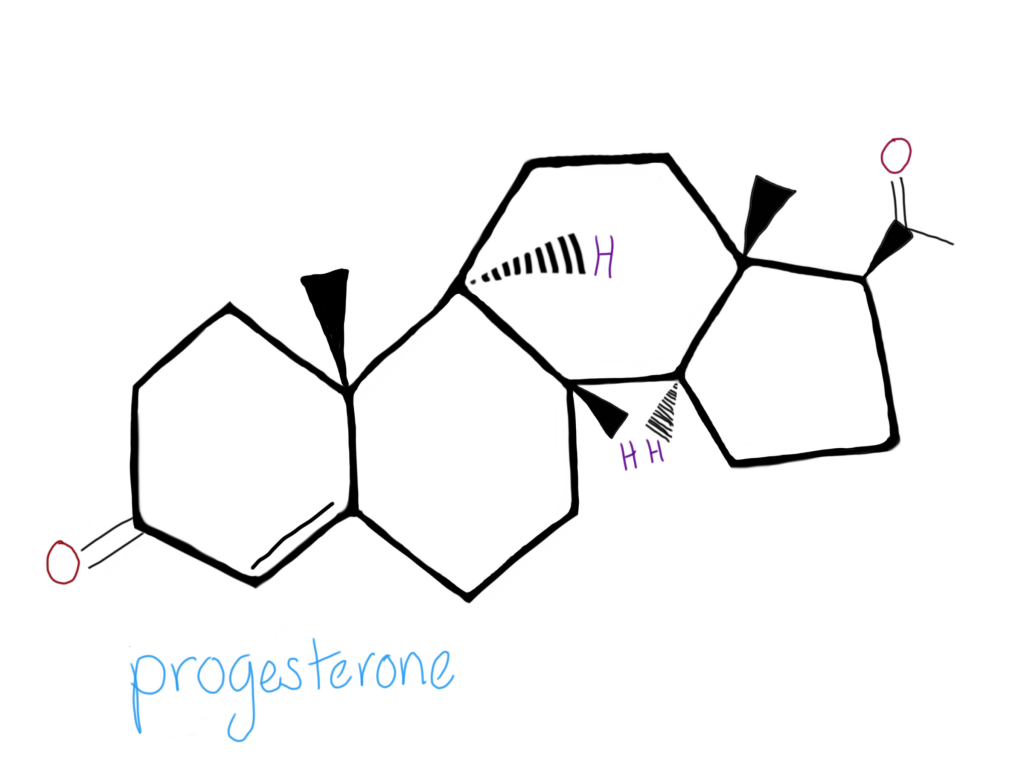Cross-Reactive T-cell Related to SARS-CoV-2 Immunity
SARS-CoV-2, widely known as COVID-19, is a member of the coronavirus family that can affect both animals and humans. COVID-19 has spikes surrounding the virus, like a corona around the sun, and has a single strand RNA (BioInteractive, 2020). There are four structural proteins in the coronavirus which includes the spike (S) glycoprotein, small envelope (E) glycoprotein, membrane (M) glycoprotein, and the nucleocapsid (N) protein (Astuti and Ysrafil, 2020).
There are several families of coronaviruses including severe acute respiratory syndrome coronavirus, Middle East respiratory syndrome coronavirus, and human coronaviruses. SARS-CoV, MERS-CoV, and SARS-CoV-2 are zoonotic originating from animals such as camels and bats (Gussow et al., 2020). Coronaviruses originating from animals are not well handled by the human immune system, causing severe symptoms. There are four families of human coronaviruses, HCoVs, that are attributed to the common cold, which usually shares similar symptoms but at a lower severity (Su et al., 2016). HCoVs can be spread easily between children, the elderly, and immunocompromised individuals.
Considering species in a given family have similar genomes, it can be assumed that they will have similar viral proteins. Coronaviruses are highly pathogenic and HCoVs are typically endemic (Su et al., 2016), which leads to systemic outbreaks of human coronaviruses. Many people have caught some form of the common cold at some time in their lives, so the body has a number of activated memory T cells. The T cells will detect certain antigenic peptides from the virus through the T cell receptors. A number of blood samples taken from uninfected individuals showed a high T cell reactivity from peptides in SARS-CoV-2 (Mateus et al., 2020), which shows a significant link between the different coronaviruses and the body’s response to the infection.
CD4+ T cells and CD8+ T cells make up the majority of T-lymphocytes and mediate in immune responses through cell-to-cell communication and cytokine secretions. These cells come into action after a naïve T cell has been activated when molecules on the T cell interact with an antigen-presenting cell (Pennock et al., 2013). These will associate with either a CD4 or a CD8 receptor depending on the cell.
The assumption was that at the beginning of the experiment an epitope repertoire would be uncovered in association with the first-generation responses of naïve T cells. Studies have found antigen-specific T cell responses to SARS-CoV-2 and had a significant amount of reactive CD4+ T found in 20 to 50% of unexposed individuals. The hypothesis is that pre-existing memory CD4+ T cells presented cross-reactivity and had an affinity to SARS-CoV-2 due to previous exposure to human coronaviruses (HCoVs). Zoonotic coronaviruses are highly pathogenic compared to HCoVs with coronaviruses such as SARS-CoV and MERS-CoV having higher case fatality rates (Gussow et al., 2020).
Using human blood samples from individuals taken between March 2015 and March 2018, which were seronegative for SARS-CoV-2, an in vitro epitope map uncovered 142 T cell epitopes across the SARS-CoV-2 genome. In 93.2% of the tests of the seronegative blood tests to the affinity of SARS-CoV-2 mesopools showed that CD4+ T cells were the responding cells. 54% of the total positive responses to the most frequent antigens were associated with the spike glycoprotein (S), however, only 20% of responses were located in the receptor-binding region which accounted for 11% of overall CD4+ reactivity. The S protein facilitates the binding of envelope viruses to host cells through attraction to an enzyme expressed in the lower respiratory tract (Astuti and Ysrafil, 2020). Epitopes from the membrane proteins were not identified in unexposed individuals, however, it is highly recognized in SARS-CoV-2 specific CD4+ responses.
During testing, it was discovered that there was significant reactivity ex vitro to SARS-CoV-2 peptides. This increased speculation of the presence of cross-reactive memory T cells between HCoVs and SARS-CoV-2. In a new test, the degree of homology between the four main HCoVs and the 142 SARS-CoV-2 epitopes were examined. Almost all unexposed donors were seropositive for the three most common HCoVs. Two categories of SARS-CoV-2 epitopes were tested for cross-reactivity with HCoVs and filtered for epitopes with high responsiveness. Epitope pools were created from the spike protein with 31 epitopes identified, only six with high homology, and 30 epitopes from the remainder of the genome, with nine having high homology. These were selected and filtered for the highest responses and placed into new CD4 pools, CD4-R30 and CD4S-31, for further experimentation.
A new peptide pool was created from encompassing peptides homologous to CD4-R30 epitopes taken from several human coronaviruses for a total of 129 HCoV homologs. The same was done to synthesize a pool from encompassing peptides homologous to the CD4-S31 epitopes taken from SARS-CoV-2 and potential epitopes from HCoVs for a total of 124 HCoV homologs. An activation-induced assay was used for the detection of virus-specific T cells in new blood samples from unexposed donors and recovering COVID-19 patients. Significant ex vivo CD4+ reactions were detected against SARS-CoV-2 spike and nonspike peptides, which were higher in COVID-19 patients. The unexposed patients presented high frequencies of CD4+ T cells against the CD4 epitope pools. There was a significant amount of CD4+ T cell reactivity against HCoVs that matched homologous peptides from other HCoVs. The hypothesis that cross-reactive CD4+ T cells existed in individuals was consistent with the detection of CD4+ T cells from homologous peptide pools. However, these findings do not support the hypothesis that previous exposure to HCoVs would induce a memory response to severe COVID-19 cases.
Ex vivo memory phenotypes were tested against several epitope megapools. Effector and central memory cells were found in antigen-specific CD4+ T cells in COVID-19 cases while CD4+ T cells in unexposed individuals possessed memory phenotypes against SARS-CoV-2 and other HCoVs. This led to another test to prove that the cross-reactivity was derived from memory T cells. Memory and naïve T cells were stimulated with the CD4-S31 epitope pool. Responses were detected in the memory CD4+ T cells but not the naïve CD4+ T cells which proves that the memory T cells that recognize HCoVs can express cross-reactivity to homologous epitopes in SARS-CoV-2. In epitopes that are ~67% homologous in SARS-CoV-2 and HCoV pairs, it was discovered that most of the reacting CD4+ T cells to the SARS-CoV-2 epitopes were memory CD4+ T cells. These memory CD4+ T cells had previously been in contact with common HCoVs and may prove the plausibility that cross-reactive CD4+ T cells may affect the outcomes and severities of COVID-19, however, the antibodies for HCoVs are species-specific and had no reaction to SARS-CoV-2.
Works Cited
Astuti, I. and Ysrafil (2020). Severe Acute Respiratory Syndrome Coronavirus 2 (SARS-CoV-2): An overview of viral structure and host response. Diabetes Metab Syndr 14, 407–412. doi:10.1016/j.dsx.2020.04.020
BioInteractive (2020). Biology of sars-cov-2. HHMI. https://www.biointeractive.org/classroom-resources/biology-sars-cov-2
Brian, D.A., and Baric, R.S. (2005). Coronavirus Genome Structure and Replication. In Coronavirus Replication and Reverse Genetics, L. Enjuanes, ed. (Berlin, Heidelberg: Springer Berlin Heidelberg), pp. 1–30. doi:10.1007/3-540-26765-4_1
Gussow, A.B., Auslander, N., Faure, G., Wolf, Y.I., Zhang, F., and Koonin, E.V. (2020). Genomic determinants of pathogenicity in SARS-CoV-2 and other human coronaviruses. Proc Natl Acad Sci USA 117, 15193–15199. doi:10.1073/pnas.2008176117
Mateus, J., Grifoni, A., Tarke, A., Sidney, J., Ramirez, S.I., Dan, J.M., Burger, Z.C., Rawlings, S.A., Smith, D.M., Phillips, E., et al. (2020). Selective and cross-reactive SARS-CoV-2 T cell epitopes in unexposed humans. Science 370, 89–94. doi:10.1126/science.abd3871
Pennock, N.D., White, J.T., Cross, E.W., Cheney, E.E., Tamburini, B.A., and Kedl, R.M. (2013). T cell responses: naïve to memory and everything in between. Adv Physiol Educ 37, 273–283. doi:10.1152/advan.00066.2013
Su, S., Wong, G., Shi, W., Liu, J., Lai, A.C.K., Zhou, J., Liu, W., Bi, Y., and Gao, G.F. (2016). Epidemiology, Genetic Recombination, and Pathogenesis of Coronaviruses. Trends Microbiol 24, 490–502. doi:10.1016/j.tim.2016.03.003








